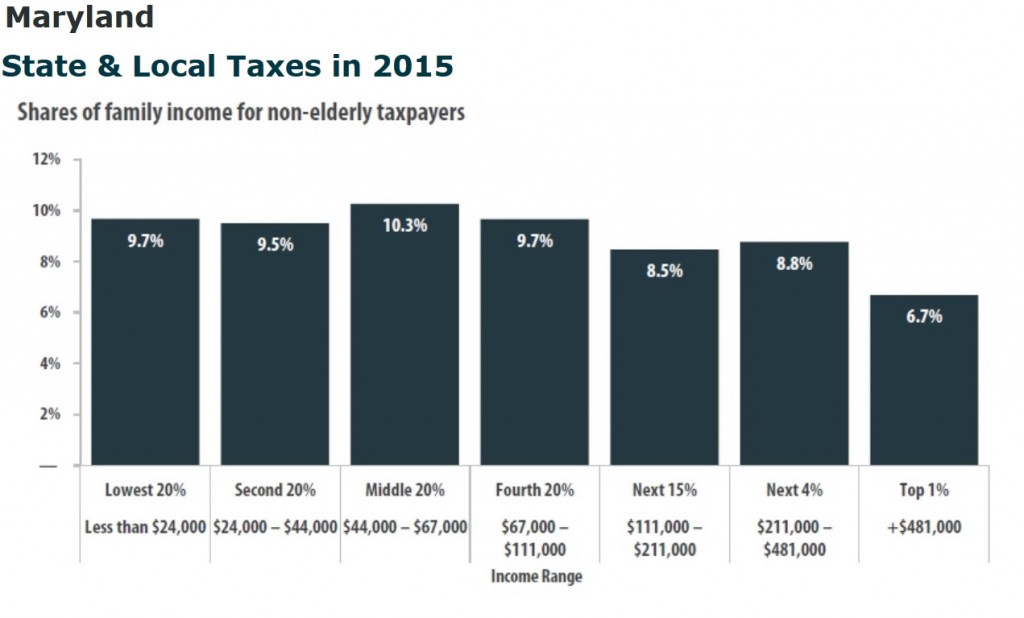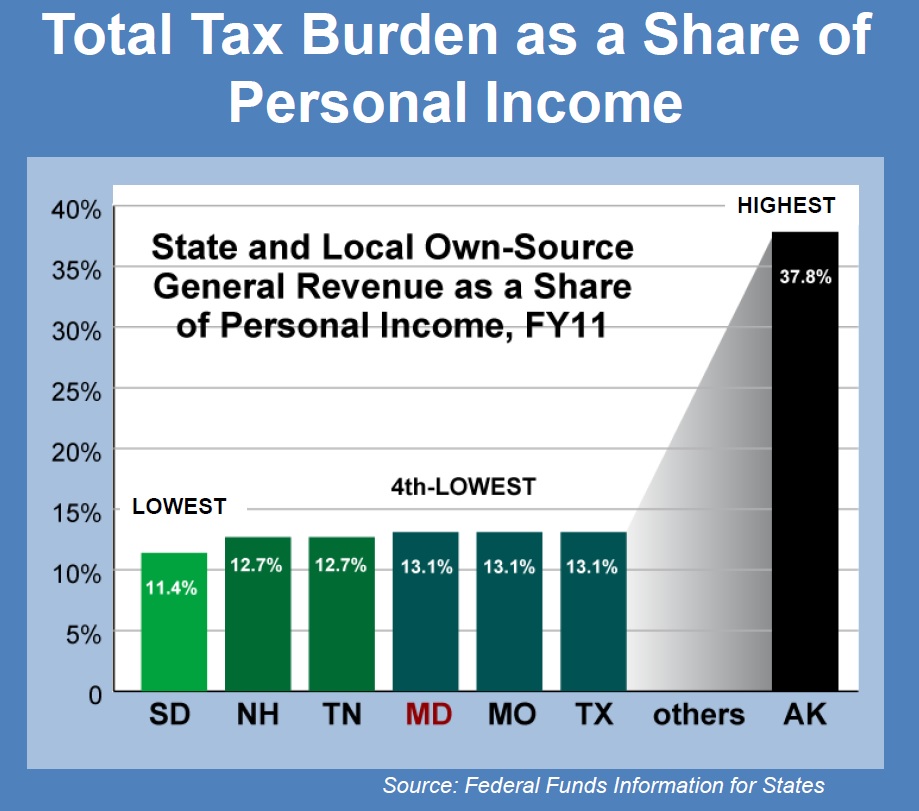Maryland taxes are fairer than in most states, report says
Maryland’s fairly positive ranking is attributed to its graduated personal income tax structure, Earned Income tax Credit, Circuit Breaker Credit reducing property taxes, and the exclusion of groceries from the sales tax.
The middle class of Maryland, those with a salary between $44,000 and $67,000, are paying the highest share of taxes at 10.3%. The institute suggests Maryland’s lack of combined reporting as part of the corporate income tax to be partially to blame. Also cited is Maryland’s failure to index income tax brackets to inflation.
The report concludes that “virtually every state tax system is fundamentally unfair, taking a much greater share of income from low- and middle-income families than from wealthy families. The absence of a graduated personal income tax and overreliance on consumption taxes exacerbate this problem,” it says.
Delaware ranks best, Pa. in Terrible Ten
Delaware ranks as the state with fairest tax structure, Viriginia ranks 35th, and West Virginia ranks 42nd.
In the report’s Terrible 10 — the 10 states with the most regressive tax structures — “the bottom 20 percent pay up to seven times as much of their income in taxes as their wealthy counterparts.” Washington State is the most regressive, followed by Florida, Texas, South Dakota, Illinois, Pennsylvania, Tennessee, Arizona, Kansas, and Indiana.
Seven of these states, including Florida and Pennsylvania, also have the highest taxes on the poor, and the lowest taxes on the wealthy.
Using different federal figures to measure state and local tax burden as a percentage of personal income, during a budget cutting briefing last week, Gov. Martin O’Malley produced a chart showing Maryland with the fourth lowest tax burden in the nation as a percentage of personal income. While Marylanders pay more taxes than most surrounding states, their incomes are also higher than most states.
Highlighting income inequality
The study by the progressive-oriented think tank also highlights the growing inequality among income and how taxation rates are deepening the split between the classes.
“On average, the poorest 20 percent of taxpayers nationwide pay more than double the effective tax rate paid by the richest 1 percent of households (10.9 percent v. 5.4 percent),” says the report.
The disparity between income brackets arises because “the lower one’s income, the higher one’s tax rate”, as stated by the institute. Regressive states lean more heavily on sales taxes to raise revenue than they do personal income taxes.
The states with a generous, refundable Earned Income Tax Credit were held in higher favor by the report, including states such as California, Delaware, the District of Columbia, Minnesota, Montana, Oregon and Vermont.
The institute’s executive director Matt Gardner urges state officials to take action.
“Policymakers shouldn’t wring their hands or ignore the problem. They should thoroughly explore and enact tax reform policies that will make their tax systems fairer.”stated Gardener.
Bills proposing “combined reporting” are introduced every year by left-leaning senators and delegates who say corporations do not pay their fair share, but the bills never make it out of committee. Combined reporting adds up all revenues by a corporation, and then taxes it based on the amount of sales in a state.
Benjamin Orr, executive director of the Maryland Center on Economic Policy, said, “This report is a timely reminder of the ways in which Maryland asks families in the middle and at the bottom of our economy to pay more than their fair share. These figures are a benchmark against which taxpayers can evaluate future tax proposals.”

MarylandReporter.com is a daily news website produced by journalists committed to making state government as open, transparent, accountable and responsive as possible – in deed, not just in promise. We believe the people who pay for this government are entitled to have their money spent in an efficient and effective way, and that they are entitled to keep as much of their hard-earned dollars as they possibly can.


